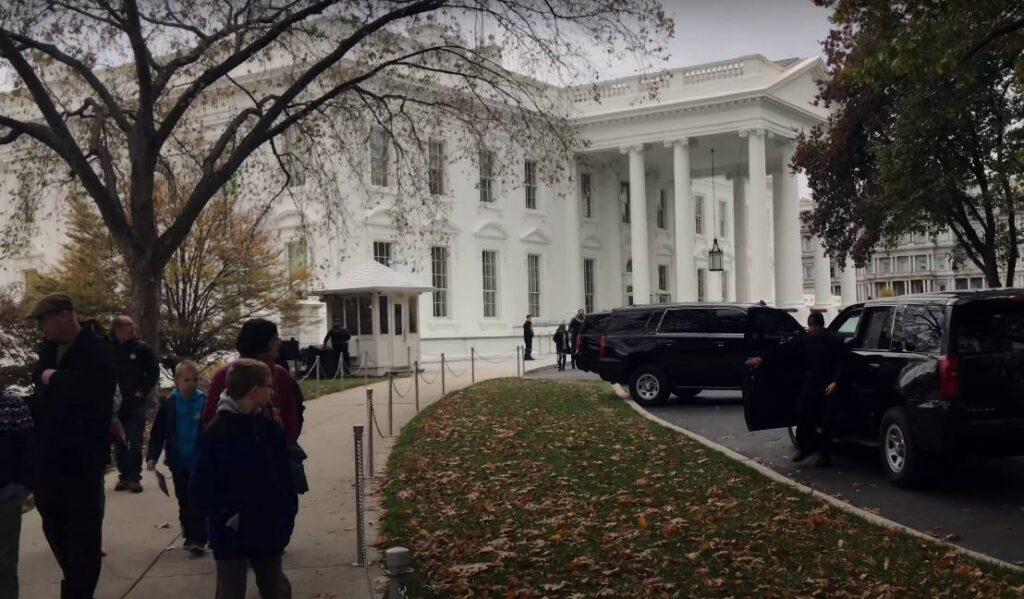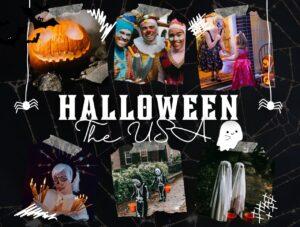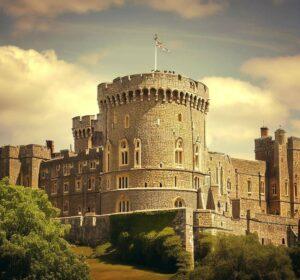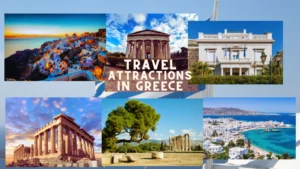The White House is an enduring symbol of American democracy and authority from its prominent location in the heart of Washington, D.C. This old building is important and has seen many events over hundreds of years. It’s where every U.S. president has lived. In this guide, we want to show you all the interesting things about it. We’ll open its special doors and tell you about its different parts – from where the president lives to the yummy food they make, the amazing art they have, the spooky ghost stories, how to visit there, and even what the president does in private.
Inside of The White House
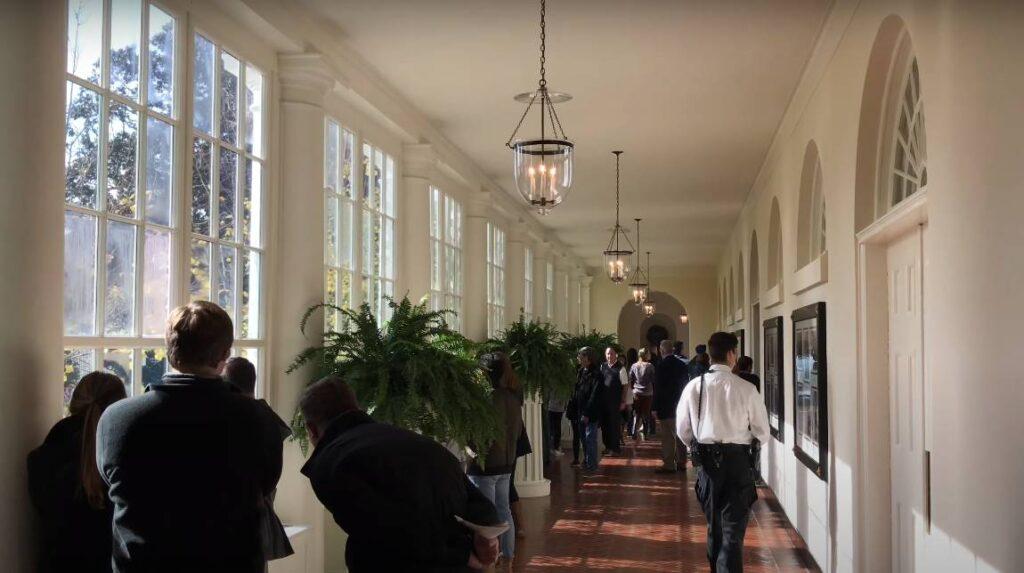
Dating back to John Adams’ occupancy, trace the transformative journey of it through the annals of time as it evolved from a construction site into an enduring symbol of American governance.
The White House stands not as a structure but as a cultural embodiment of the nation’s ideals, values, and aspirations. Explore its profound symbolism and the role it plays in fostering a sense of national unity.
The walls hold within them an anthology of history-making events. It is from signing pivotal legislation to hosting dignitaries and receiving foreign leaders. Take a virtual tour through these iconic moments that have shaped the nation’s course.
How to Visit The White House
Here’s a step-by-step guide on how to arrange your visit:
- Preparation: Do thorough research and organize your trip ahead of time. Public tours are highly sought after and must be requested through your Member of Congress. Consider the time of year you’d like to visit, as availability can vary.
- Contact Your Member of Congress: Reach out to your U.S. Senator or Representative to request a tour. They can submit a request on your behalf to the White House Visitor Center. You can find contact information for Members of Congress on official government websites.
- Submit Your Request: Your Member of Congress will assist you in submitting a tour request to the White House Visitor Center. Get ready to give your full name, date of birth, and social security number for security clearance purposes. Include the names of everyone in your group who will be attending.
- Receive Confirmation: Upon approval, the White House Visitor Center will send a confirmation with visit details. It includes the date, time, and security procedure instructions.
- Arrive Early and Follow Security Protocols: On the day of your tour, arrive at the designated time and location indicated in your confirmation. Follow all security instructions, including presenting valid photo identification for everyone in your group. Expect thorough security checks similar to those at airports.
- Enjoy the Tour: On the guided tour, you’ll discover its public rooms and learn about its history, architecture, and importance. Keep in mind that you can take photos in specific areas.
- Follow Guidelines: While on the tour, follow the guidelines provided by the staff. This includes staying with your group, respecting the property, and refraining from touching artifacts or furnishings.
- Stay Informed: Stay updated on the official website and communications from the White House Visitor Center for tour process changes or updates.
Chef Secrets of The White House
The White House’s culinary team is an assembly of skilled chefs. They are sculpting flavors that resonate with presidents’ palates and international guests alike. Their work remains hidden, yet it’s an essential component of The White House’s legacy.
The chefs’ artistry extends to understanding and embodying the president’s culinary preferences, catering to dietary needs and personal tastes. This intricate balancing act ensures that every dish is a reflection of both the president’s individuality and the occasion.
While often overlooked, the culinary artisans at The White House contribute to the nation’s narrative through each crafted meal. Their flavors convey messages of diplomacy, culture, and creativity.
Art and Paintings
- A Gallery of Legacy: Step into the role of an art enthusiast as you navigate through the treasures adorning the White House’s interiors. It is a living gallery that encapsulates American history and creativity.
- Storied Strokes: Immerse yourself in the stories behind renowned paintings and artworks that grace The White House, capturing pivotal moments, personas, and narratives from the nation’s past.
- Reflection of the Nation: See the powerful connection between art and society in The White House’s collection, reflecting American identity and diversity.
Ghost Stories of The White House
It steeps in history and layered with significance, holds more than just political narratives within its walls. From spectral sightings to eerie encounters, the tales of supernatural presence evoke intrigue and curiosity, shaping a side of it that exists beyond the realm of the tangible.
- Echoes of the Past: These ghost stories often center around historical figures who once inhabited here, from Abraham Lincoln to Dolley Madison. These echoes from the past create a connection between the present occupants and those who’ve gone before, bridging the gap between eras.
- Presidential Apparitions: Reports of Abraham Lincoln’s ghost wandering the halls and gazing out from windows persist, leaving an indelible mark on The White House’s lore. Presidents and visitors alike have recounted eerie encounters that defy explanation, sparking debates about the nature of these apparitions.
- Supernatural Significance: The ghost stories contribute to The White House’s aura, turning it into a space that not only embodies power but also holds an enigmatic allure. These tales underscore the historical weight carried by the building, where presidential decisions resonate across time.
House of the President
- Beyond the Podium: Venture beyond the façade of political speeches and public appearances to unveil the sanctum of the president’s private quarters – a space where personal moments interweave with public duties.
- Juggling Acts: Gain insight into the delicate equilibrium presidents must strike between their roles as public figures, leaders of the nation, and individuals with families and private lives.
- The Pinnacle of Address: Reflect on the extraordinary privilege and unique responsibilities that come with living at the most illustrious address in the nation, encapsulating not only the prestige but also the immense weight of presidential decision-making.
The White House stands as an embodiment of America’s past, present, and future – a monumental address that captures the nation’s essence and its ongoing narrative. From its distinguished chef secrets to its captivating artistry, from its haunted lore to its private chambers, this guide paints a panoramic canvas that invites a deeper appreciation for its enduring significance within the tapestry of American heritage.
Most Searched FAQs About The White House
- Can I visit The White House?
Yes, you can visit The White House through guided tours. However, tours must be requested through your Member of Congress and are subject to availability. - Are there ghost stories about The White House?
Yes, there are numerous ghost stories associated with The White House, including reports of sightings of Abraham Lincoln’s ghost and other supernatural occurrences. - What’s the total number of rooms in The White House?
The White House has 132 rooms, each with its historical significance and purpose. - Can you tour the private quarters of The White House?
No, the private quarters of The White House are not open to the public. Tours typically cover the public rooms and spaces. - What is the history behind The White House?
The White House was completed in 1800 and has since served as the official residence of the U.S. President. It has undergone renovations and expansions over the years. - How often are state dinners held at The White House?
State dinners at The White House are held a few times a year to host foreign leaders and dignitaries for diplomatic and cultural exchanges. - What traditions are associated with living in The White House?
Living in The White House involves participating in traditions such as the annual Easter Egg Roll and contributing to the holiday decorations. Each First Family also adds their unique touch to these customs.
